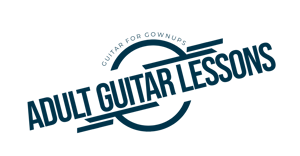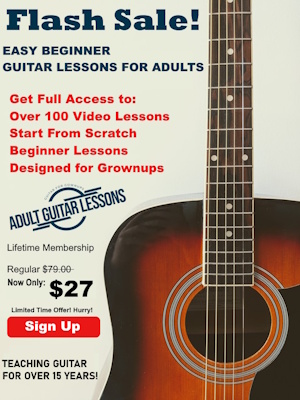Years ago I played guitar with bands doing gigs on what I lovingly refer to as the “Juke Joint” circuit. Little dives, honky tonks and watering holes catering to the crowd that works hard, and parties harder.
In many of these “joints”, a tequila induced transformation would take place somewhere on the south side of midnight, and invariably, the warm fuzziness of friends having fun would be replaced by feuds and fisticuffs.
As a guitar player on stage I did my best to avoid these late night free-for-alls and just play the gig while the “joint” started rockin’, but there were occasions when landing in the middle of a brawl was simply un-avoidable.
It was in these moments I experienced the true meaning of “joint” pain!
But the joint pain we will discuss today is of a different variety.
Most of my guitar students are people that choose to pick up the guitar “later in life” and fall into the “over 40, 50, 60 and even 70” category.
As a result, one of the more common comments I receive are from students experiencing joint pain in fingers, hands, wrists and elbows while playing guitar.
As we get older, our bodies naturally become less cooperative when attempting physical activities that we are not used to.
We can spend an afternoon raking leaves, or a weekend cleaning out the garage, only to wake up with soreness and discomfort that lingers for days.
In our twenties and thirties we could bounce out of bed in the morning without the slightest hesitation, but as we age the pain is quicker to come, and longer to leave.
This applies to the act of learning guitar as well. A new guitar student, of any age, has to go through the process of teaching fingers and hands to do things they have never done before.
Coaxing muscles and joints into awkward contortions when attempting to form chords and play scales on the guitar will normally result in a certain amount of soreness and discomfort. Even with a younger player.
So what can we do to ease the pain?
Here are some ideas that might help:
1. Get a hand exercise device. Many of these are spring loaded devices that are squeezed repeatedly to increase hand strength. There are also exercise balls made for the same purpose.
The point is to develop hand muscle strength that will assist in easing any discomfort when playing guitar.
2. Get a finger exercise device. These are also spring loaded devices, but are designed to give the fingers a workout. They have 4 individual buttons allowing you to press down with each finger to develop strength.
They are primarily designed for guitar players, and can be found at most music stores.
3. Lift low weight dumb bells. These will help in strengthening the joints and muscles in the elbows and forearms, which are used when playing guitar.
Of course, consult your doctor before attempting any new workout program.
4. Play guitar! Yes, I know, if the soreness and pain are caused by playing guitar, why would you want to do it?
The reason is that ALL new guitar students experience a certain amount of pain and discomfort in the early days, and the only way to get past it is to keep playing guitar until your hands, fingers, wrists and elbows strengthen.
Just know that, unless your soreness and pain are caused by an arthritic condition, what you are experiencing is normal at any age. It just takes us longer to heal than a younger player.
For me, at my age, I do my best nowadays to steer clear from the joint pain of the “juke joint” variety.
But for you, the joint pain you are going through as a new guitarist is a natural part of the process. Just stick with it, without overdoing it, and you will find that it will eventually pass – or at least, greatly diminish!



